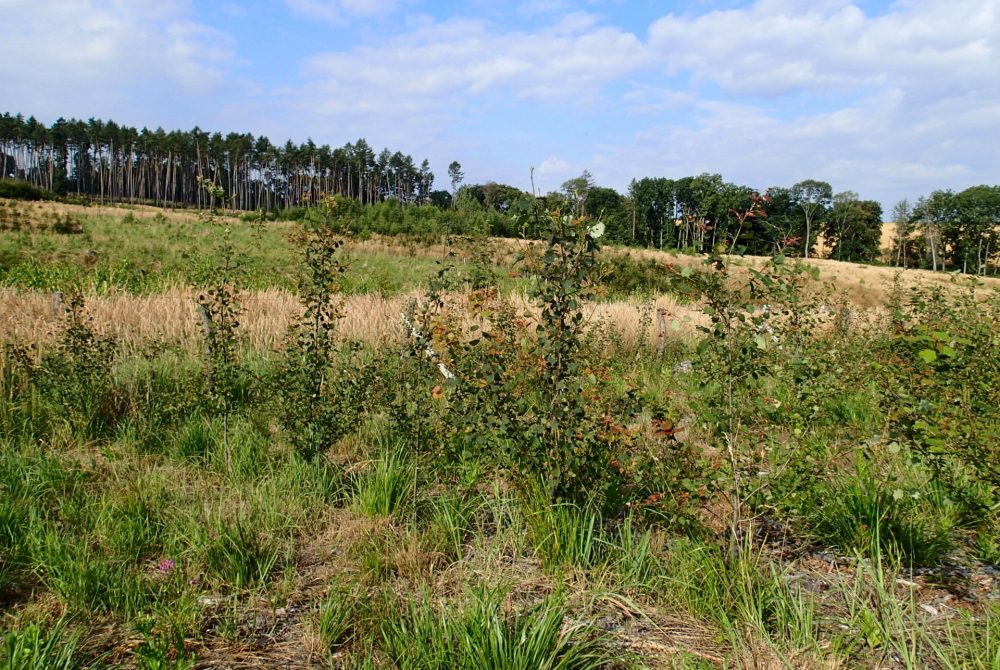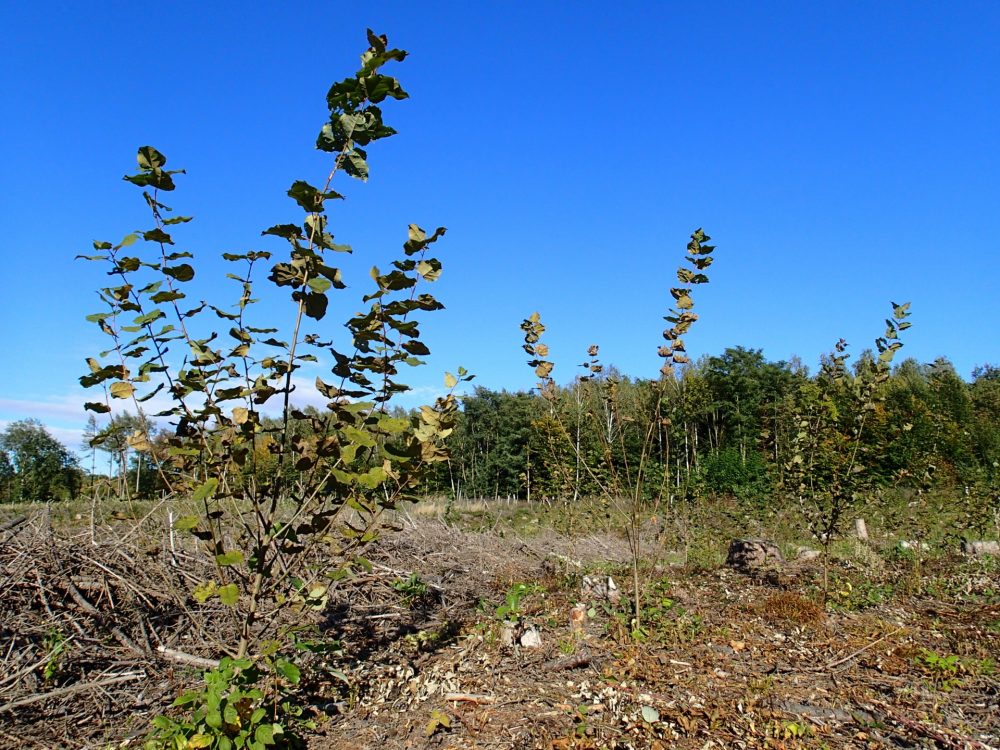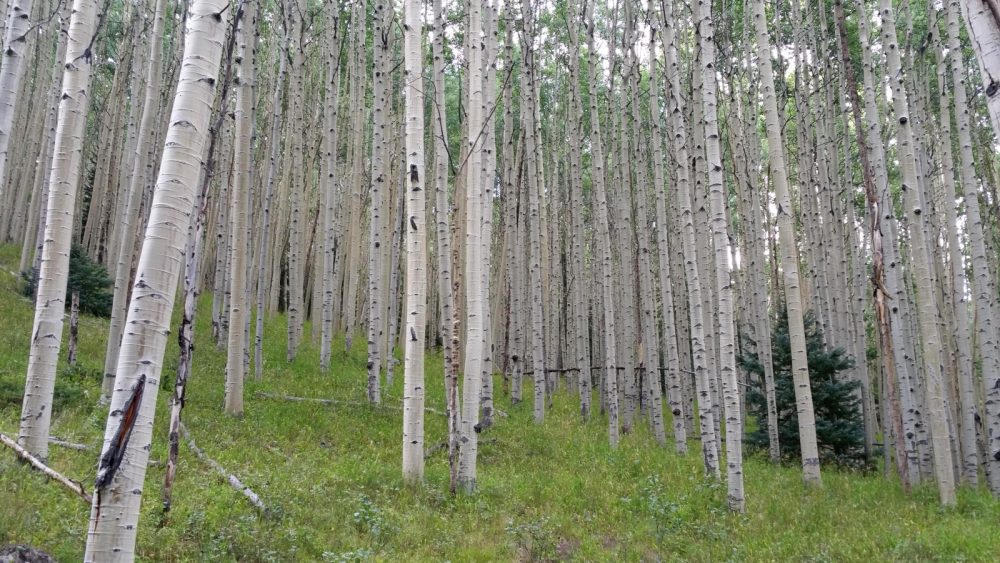Which tree species will survive extremal site conditions on calamity clearings?
What tree species we should use to afforest clearings after a bark beetle calamity? Many forest owners and foresters are concerned about this issue. Especially, when over 60% of the clearings are larger than five hectares. But there are also continuous clearings of hundreds of hectares, evidenced in current time. So, is that why a three-hectare clearing actually small? Our measure of clearings´ size perception is changing. We couldn’t even imagine such clearings areas, in the past. In addition, it is very likely that the smaller clearings will connect into larger uniform units as the remnants of the standing stands will continue, and their destruction will gradually be completed by wind and snow.
Actually, which tree species can survive on such clearings without shade, with extreme temperature fluctuations, on soil dried or, conversely, permanently wet, constantly exposed to the wind?
 In addition to common domestic trees, as birch, aspen, alder, wild cherry, beech, oak and others, various species of hybrids are suitable for testing, which combine the advantageous characteristics of both parents, such as durability and good wood production. One of the tree species tested long-time in Europe is the European aspen poplar and its hybrids with the North American aspen poplar.
In addition to common domestic trees, as birch, aspen, alder, wild cherry, beech, oak and others, various species of hybrids are suitable for testing, which combine the advantageous characteristics of both parents, such as durability and good wood production. One of the tree species tested long-time in Europe is the European aspen poplar and its hybrids with the North American aspen poplar.
Planting of Populus tremula on the clearings locality, photo Luďka Čížková
For more detailed information on the issues addressed, see below the abbreviated Summary of the paper „Growth of hybrid aspen (Populus tremula x Populus tremuloides) in experimental plots in Moravian regions“ (Čížková et al. 2022).
Populus tremula L. (European aspen) is an important pioneer tree species with specific amelioration function and this species can play role in afforestation of hectares of clearing resulting due to salvage felling. Use of European aspen hybridization with Populus tremuloides Michx. (trembling, American aspen) started in the Czech Republic in 1976 when breeding programmes were utilized in many countries. The aim of the Czech breeding programme was concerned on growing of hybrid aspen as one of substitute of damaged Norway spruce in the Ore Mountains where spruce completely died by air pollution. Clone collection of selected clones of P. tremula and P. tremuloides was established in Forestry and Game Management Research Institute. Parent trees P. tremula were partly selected as plus trees mostly in the Ore Mountains region, partly obtained in cooperation with the Institute of Forest Sciences in Eberswalde (Research Station Graupa). These clones selected on the base of progeny tests during long-term research were used as maternal only and labelled as P. tremula Graupa. P. tremuloides from Maple (Ontario) were used as the maternal and also the paternal parents in breeding.
 One year old planting of Populus tremula having been established by container-grown plants on the clearings area prepared by wood residue crushing, photo Luďka Čížková
One year old planting of Populus tremula having been established by container-grown plants on the clearings area prepared by wood residue crushing, photo Luďka Čížková
This clone collection was used in new research project in 2005. Based on early tests, 33 hybrid progenies of P. tremula × P. tremuloides, P. tremuloides × P. tremula and four reference progenies of P. tremula × P. tremula from controlled pollination were selected and planted. Experimental plots were established with spacing 2 m × 3 m. Experimental plot Novosedly was located in South Moravia (180 m a. s. l.) as agricultural land afforestation, experimental plot Krnov (320 m a. s. l.) in northern Moravia region was established as afforestation of marginal land. Experimental plot Líšná was situated in a valley between forest stands (260 m a. s. l.). Basic quantitative characteristics DBH and tree height of all trees were measured at the age of 10 years, and stem volume was calculated with regarding to volume table constructed by Krüdener and Orlov as well as standing volume for each progeny. Differences between progenies and between groups of progenies according to hybrid combination were investigated by two-way ANOVA test. Differences were significant in all cases in experimental plot Novosedly, Krnov, Líšná except difference between group of progenies P. tremula CZ × P. tremuloides and P. tremuloides × P. tremula CZ in plot Novosedly.
 Forest stand with North American aspen poplar in North America, source of photo: Pixabay free
Forest stand with North American aspen poplar in North America, source of photo: Pixabay free
Obtained results indicate the best performing hybrid aspen were progenies P. tremula Graupa × P. tremuloides. Standing volume of this group of progenies ranged between 197–295 m3. ha–1 (average value 223 m3. ha–1) in Novosedly experiment, between 163–225 m3. ha–1 (average value 187 m3. ha–1) in Krnov experiment. Standing volume of the group of progenies P. tremula CZ × P. tremuloides with maternal genotypes selected only as plus trees in forest stands ranged between 193–208 m3. ha–1 (average value 169 m3. ha–1) in Novosedly experiment, between 163–202 m3. ha–1 (average value 169 m3. ha–1) in Krnov experiment. Decreasing differences between value of standing volume of the best group of progenies P. tremula Graupa × P. tremuloides and P. tremula CZ × P. tremuloides progenies reflected influence of optimum site quality, which can increase opportunity to achieve maximum of possible yield of the best hybrid aspen. Two universal progenies were observed inside the group P. tremula Graupa × P. tremuloides, which exhibited excellent results, standing volume 253 m3. ha–1 in Novosedly (238 m3. ha–1 resp.) and 225 m3. ha–1 in Krnov (185 m3. ha–1 resp.). Such properties are the most desirable result of breeding.
Maternal genotypes P. tremuloides were crossed with paternal genotypes P. tremula selected as plus trees. Standing volume of 10 progenies in Novosedly ranged between 103–255 m3. ha–1 (average value 182 m3. ha–1). In Krnov experiment were planted only four progenies and their standing volume ranged between 90–175 m3. ha–1 (average value 132 m3. ha–1). Reference progenies of P. tremula CZ × P. tremula CZ (crossing of parent plus trees from forest stands) planted in Krnov exhibited the lowest standing volume (92–105 m3. ha–1). Experimental plot Líšná established between forest stands was measured at the age 11 years due to slow growth. Extreme site conditions were reflected in low value of biometric characteristics and evaluation was concerned on comparison of DBH of progenies growing in Líšná and Krnov. Group of progenies P. tremula Graupa × P. tremuloides achieved the best results, DBH ranged among 10.3–12.8 cm with average value 11.2 cm (in Krnov with average value 13.7 cm). The group of progenies P. tremula CZ × P. tremuloides exhibited similar value of DBH, average 10.6 cm (in Krnov 13.5 cm). Reference progenies of native P. tremula CZ × P. tremula CZ in plot Líšná mostly died in competition with faster growing hybrid aspen. Lack of light is limiting factor of growth and survival of aspen as a pioneer tree species. This result underlines importance of choice of suitable site for European aspen and hybrid aspen planting.
The paper “Growth of hybrid aspen (Populus tremula x Populus tremuloides) in experimental plots in Moravian regions“ (Čížková et al. 2022) can be downloaded here.
Authors of the paper: Luďka Čížková, Jaroslav Dostál, Petr Novotný, e-mail: novotnyp@vulhm.cz
Prepared with use of abbreviated Summary of paper by: Ing. Jan Řezáč, FGMRI, e-mail: rezac@vulhm.cz
